81 F. high in the Twin Cities Friday.
82 F. average high on June 27.
87 F. high on June 27, 2013.
June 27, 1876: The latest ice breakup in Duluth.
.90″ rain predicted for the MSP metro by Monday afternoon (00z NAM).
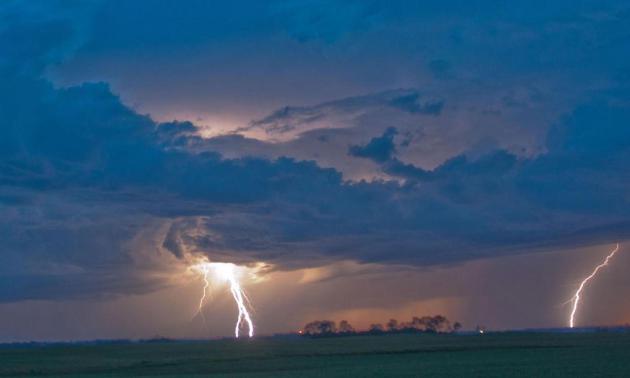
Adding Insult to Injury
Only in Minnesota can one be knee-deep in muddy water with dust blowing in your face.
The weather changes in a hurry around here. But lately systems have been limping along, even stalling for days on end, magnifying rainfall amounts.
Some of the water management engineers at Prinsco in Willmar have noticed the changes. “Is this a fluke or a trend? How do we plan from year to year?” they asked me after a recent presentation showing the trends. Build resilience into your systems I told them. We’ve been poking the climate with a long, sharp, carbon-tipped stick, then acting surprised when the weather bites back. Expect more volatility.
How I long for average.
A new front runs out of gas overhead this weekend, sparking rounds of T-storms, some capable of 1 to 3 inch rains. I’ll be surprised if we don’t break the all-time June rain record, set in 1874.
Sunday still looks like the sunnier, warmer day, but highs surging into the 80s may spark a more severe squall line, capable of hail, damaging winds, even a few tornadoes. Stay alert out there, especially late tomorrow.
A welcome midweek cool front gives way to 80s by the 4th of July. Another rowdy gang of T-storms pops next weekend as highs top 90F.
Surprised? Me neither.
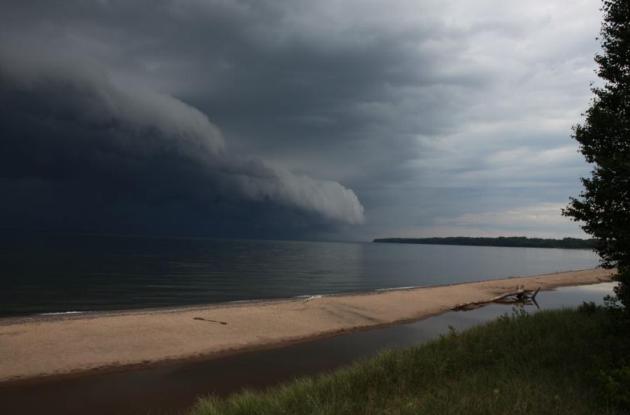
On Track For A Record Statewide June Rainfall Record? We don’t have far to go to see a statewide rainfall record fall by the wayside; a very good chance 2014 will eclipse 1914 as the wettest June in recorded history. Here’s an excerpt from Dr. Mark Seeley’s weekly WeatherTalk Newsletter: “…Though June temperatures around the state were near normal, rainfall was far from it, in fact record-setting for many communities. On a statewide basis the average rainfall for June so far has been about 7.29 inches, just behind the all-time wettest June of 1914 when the statewide average was 7.32 inches, a record likely to be broken by next Monday. Flooding has been widespread on many Minnesota watersheds as a result of the heavy rains…”
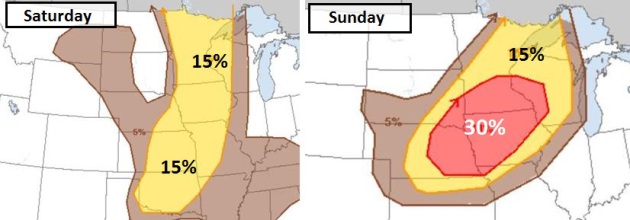
Weekend Severe Threat. Much of Minnesota is in a “slight” severe risk area today, again tomorrow. Although winds aloft are relatively light (one reason why weather systems are moving so slowly, squeezing out so much heavy rain), but there may be enough instability for small hail and gusty winds today. The severe threat increases tomorrow as a short-wave approaches and wind shear intensifies. If the sun is out midday and afternoon and highs reach the mid to upper 80s a squall line of severe storms may form over central and southern Minnesota, capable of larger hail, damaging straight-line winds, even a few tornadoes. I wouldn’t be surprised to see NOAA SPC upgrade Sunday’s risk to “moderate” over southern Minnesota and Iowa. Stay alert, especially tomorrow afternoon and evening.
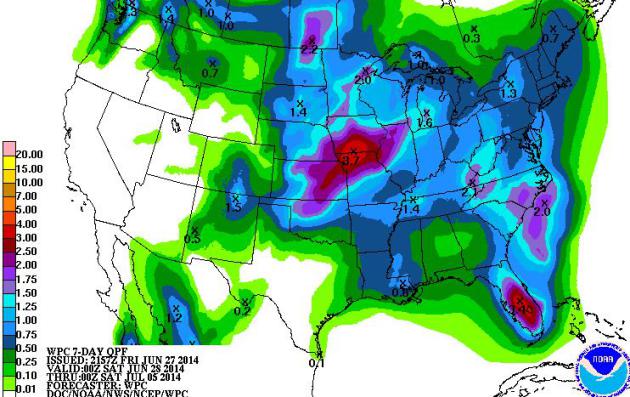
The Same Weather Map. I feel like these days have been cloned, recycled – it’s basically the same pattern, day after day, week after week, as a family of fizzling fronts spark rounds of heavy T-storms over the central Plains and Midwest. The heaviest 2-4″ amounts are likely over southern Iowa and northern Missouri, closer to .75″ to 2″ for most of Minnesota, most of that coming today and Sunday.
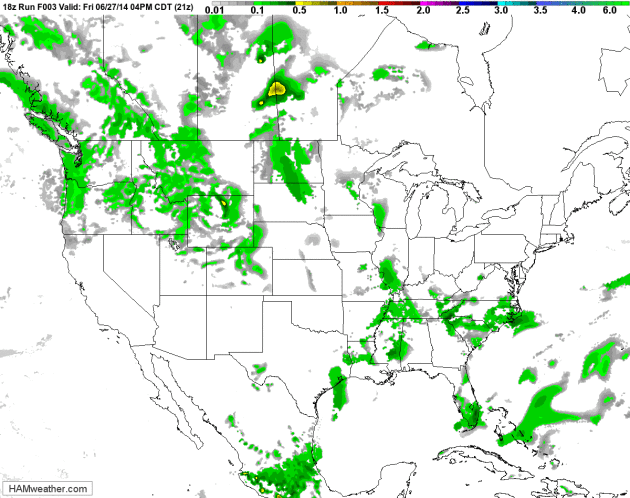
A Thundery Dance. The drought continues to deepen over California (where locals will begin praying for a strong El Nino any day now), but more heavy T-storms spin up from the Plains into the Great Lakes, Ohio Valley and Southeast, reaching New England by Monday. 84 hour NAM Future Radar courtesy of NOAA and HAMweather.
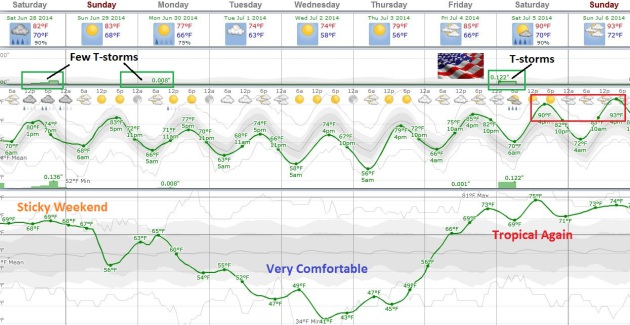
Unusually Big Swings for late June – early July. Sunday looks like the warmer, sunnier day of the weekend, friends, neighbors and complete strangers whining about dew points in the upper 60s. Next weekend may be even more uncomfortable if long-range guidance is to be believed, with dew points possibly rising into the low and mid 70s with highs topping 90F. In-between a big break as Canadian air pushes south, dropping dew points into the 40s by late Tuesday into Thursday morning, more like September. The 4th of July? 80s, sticky humidity and a few T-storms, especially northern Minnesota. Graph: Weatherspark.

Historic Data: Warmest Day of the Year? Here’s an interesting graphic from NOAA NCDC, showing the statistical (mean) date of the warmest day of the year, ranging from August 3 in North Dakota and the Red River Valley to July 18 at St. Cloud, July 8 in the Twin Cities and much of southern Minnesota to August 13 at Houston and late August along the California coast.
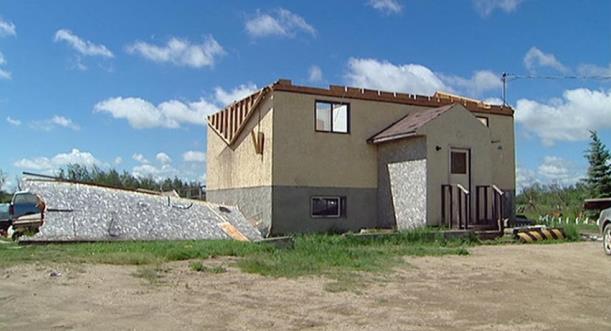
U.S. Tornado Warning System Far Surpasses Canada’s. CBC News in Saskatchewan has the article; here’s the introduction: “Environment Canada’s severe weather warning system is lagging far behind the American system in several ways, potentially putting lives at risk. That’s the conclusion of Saskatchewan storm chaser Greg Johnson, who has tracked tornadoes on both sides of the border for a decade. Johnson says that Environment Canada has “a communication problem where they don’t just readily share the information, it’s not available quickly.” “They don’t have a really good mechanism for getting that information that they do have out to the public.” Johnson said that compared with the United States, it’s as though Canada has no warning system at all…”
Photo credit above: “A roof was torn off a home on the Kawacatoose First Nation in Saskatchewan after a tornado struck in 2010.” (CBC)
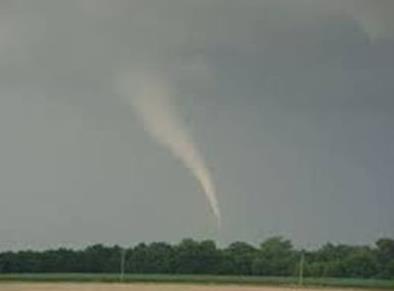
School Buys Tornado Helmets. This story from AP and krmg.com made me do a double-take, but it makes perfect sense: a relatively low-cost, high-impact way to cut down on blunt force head trauma. Most tornado-related injury and death is related to flying debris; wearing a helmet, any helmet, can help to lower the risk. This school district is the third in Oklahoma to invest in helmets. Here’s an excerpt: “The Duncan Board of Education has approved the purchase of 4,500 skateboard helmets for students and employees to wear in case of a tornado. The board spent $34,650 on the helmets with funds raised by the Cover Our Kids campaign in Duncan. The campaign was created in response to the May 2013 tornado in Moore, which killed seven schoolchildren…”

4 Maps Uncover Summer Tornado Hotspots. Colorado in June. Who knew? Here’s an excerpt from the Washington Post’s Capital Weather Gang: “…June is the most active of the summer months for tornadoes (intensity and frequency) and – more than the other summer months – geographically concentrated in the Plains, as shown in these cartograms of total tornado count by county by month. The counties are distorted based on their total tornado count in each month relative to a national average. Solid red counties have 25 or more tornadoes in the month shown…”
Map credit: Jordan Tessler.

Rumble in the Jungle: Does High Humidity Trigger More Hamstring Injuries? Here’s an excerpt of an interesting story at USA Today: “…Hamstring injuries occur when the quadriceps muscle that contracts to move the leg forward overpowers the hamstring. Athletes playing in higher-than-normal heat and humidity could be at greater risk to injury because those conditions cause greater fatigue, Casa said. “I believe that most of the 32 teams underutilize science to prevent injury and maximize performance when it comes to maximizing intense exercise in the heat,” he said…”
Photo credit above: “United States’ DaMarcus Beasley is taken off the field with an injury during the group G World Cup soccer match between the United States and Portugal at the Arena da Amazonia in Manaus, Brazil, Sunday, June 22, 2014.” (AP Photo/Marcio Jose Sanchez).
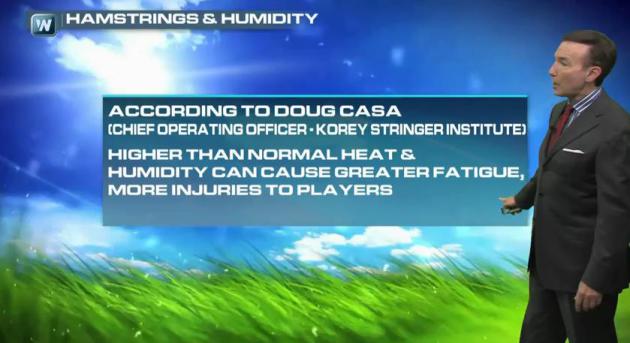
World Cup Weather: Does High Humidity Trigger More Injuries? There’s growing scientific evidence that high humidity can cause even more problems with sports-related injuries than extremely hot temperatures. That’s the subject of today’s Climate Matters: “In 8 days of the World Cup, 9 players have gone down with a muscle or hamstring injury. What’s going on? It might be the humidity leading to the spike in non-biting related injuries. WeatherNationTV Chief Meteorologist Paul Douglas goes over the correlation between high humidity and muscle and hamstring injuries.”
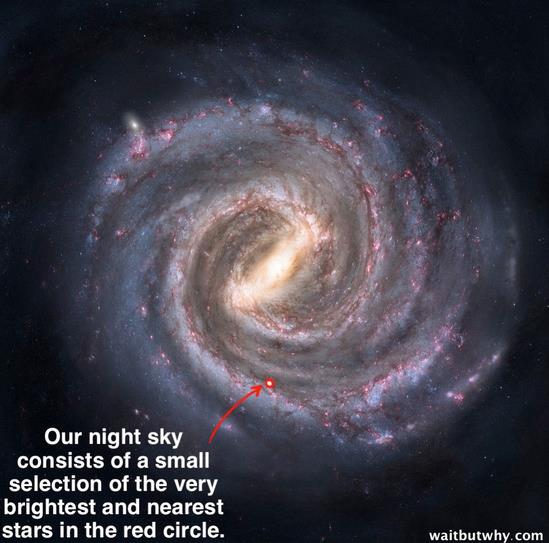
The Fermi Paradox. If there are aliens lurking out there, why haven’t we heard from them yet? Here’s a clip from a thought-provoking article at Wait But Why: “…SETI (Search for Extraterrestrial Intelligence) is an organization dedicated to listening for signals from other intelligent life. If we’re right that there are 100,000 or more intelligent civilizations in our galaxy, and even a fraction of them are sending out radio waves or laser beams or other modes of attempting to contact others, shouldn’t SETI’s satellite array pick up all kinds of signals? But it hasn’t. Not one. Ever. Where is everybody?…”
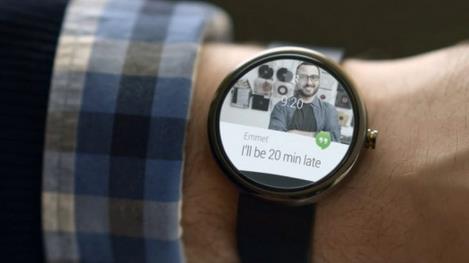
Google Launches Android Wear, Hoping For A Wearable Revolution. Just tell me when I can install the implants directly into my brain ok? Here’s a clip from Gizmag: “…Android Wear is the company’s software platform for linking smartwatches from companies including LG, Samsung and Motorola to Android phones and tablets. A preview of Wear was introduced this spring, but today Google provided more details on how it will work and made it clear that the company is investing heavily in the notion that wearables are the future, even as early smartwatches have failed to impress most consumers. Android Wear takes much of the functionality of Google Now and makes an attached smartwatch the home for receiving notifications and context-based information and suggestions that currently live within Now on Android devices…”

The Perils Of Sitting. Wait, I lettered in sitting in high school; I was really, really good at it. I’m still gifted. But I should get off my butt a little bit more often after reading this article at Quartz; here’s a clip: “…It’s been linked to cancer, diabetes, and cardiovascular disease. In this latest meta-analysis, Daniela Schmid and Michael F. Leitzmann of the University of Regensburg in Germany analyzed 43 observational studies, amounting to more than 4 million people’s answers to questions about their sitting behavior and cancer incidences. The researchers examined close to 70,000 cancer cases and found that sitting is associated with a 24% increased risk of colon cancer, a 32% increased risk of endometrial cancer, and a 21% increased risk of lung cancer…”

New York Is The Most Welcoming City In The World, And Paris Is The Least. Here’s a clip from an interesting story at Huffington Post: “…In a recent survey, money-saving site Coupon Codes Pro asked thousands of “global travelers” which cities they’ve found the most — and least — welcoming on their travels. The site provided globetrotters with a list of world cities and asked them to pick the “most welcoming” ones, as well as call out any places that had been particularly “unwelcoming” to them in the past (a highly scientific process, no?)…”

Keep Your Shoes On: The Future of Airport Security. Here’s a snippet from Conde Nast Traveler and Huffington Post: “With five billion travelers expected to take to the skies within the next 12 years–an increase of about 50 percent over current numbers–international airlines are understandably nervous that the current security strip-tease could bring air travel to a halt. (Or, at least, a very slow slog.) Imagine, then, if you could always keep your shoes on and your toiletries stowed, and simply breeze through a corridor, wheelie in tow, while hidden sensors scan you and your belongings pre-boarding…”


TODAY: Unsettled, and humid. Showers and T-storms, windy. Winds: S 15-30. High: 82
SATURDAY NIGHT: More T-storms, locally heavy rain. Low; 70
SUNDAY: Some sun, severe T-storm risk late. High: 88
SUNDAY NIGHT: Strong to severe T-storms, especially evening hours. Low: 62
MONDAY: Lingering T-shower, then partial clearing and less humid. High: 84
TUESDAY: Partly sunny, cooler breeze. Dew point: 56. Wake-up: 62. High: 75
WEDNESDAY: Blue sky, comfortable. Dew point: 45. Wake-up: 55. High: 74
THURSDAY: Plenty of sun, still pleasant. Wake-up: 56. High: 79
4th of July: Warmer, stickier. T-storms up north. Wake-up: 64. High: 85
Climate Stories…

Calling Out The Delayers. It’s getting harder for rational, data-driven people to deny the reality of climate change, so they’re moving on to a different tactic: let’s delay action until we know more, or have better technology, or other countries step up first, etc. etc. Here’s a clip of an Op-Ed at MetroWest Daily News in Framingham, MA: “…Delayers” often profess agreement with the scientific consensus and support for climate action, at least in theory. Voices like Bjorn Lomborg, Roger Pielke Jr. and others at the Breakthrough Institute have pioneered this tactic, which establishes credibility and grants entrance into a mainstream media increasingly closed to the denial of basic science. But after token acknowledgement of the problem, a litany of excuses for inaction begins, often on economic grounds…”

What Are They Teaching Your Kids About Global Warming? The National Journal takes a look at the fine line many high school science teachers are being forced to walk when discussing the science of climate change; here’s a clip: “…All this puts science teachers in an awkward position: Scientists insist that teaching the controversy—and not the consensus—is a dereliction of duty and a propagation of falsehood. But a powerful conservative coalition opposes any effort to standardize a consensus curriculum, and they’ve had success in blocking such a standard from taking effect. The end result: a patchwork of climate instruction guidelines that largely leaves teachers to their own devices, facilitating massive disparities in global-warming education from school to school and state to state. “There’s a lot of variability in how this is taught right now,” said Minda Berbeco, the National Center for Science Education’s programs and policy director. “What’s really troubling is a lot of students are not receiving accurate scientific information…”
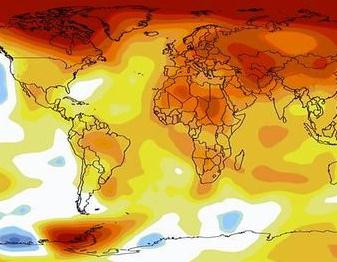
Rising Temperatures Drive People To Relocate. Here’s a snippet of an interesting article at Scientific American: “…A new study published this week in the Proceedings of the National Academy of Sciences follows more than 7,000 households in Indonesia over 15 years to conclude that sudden disasters in fact have a much smaller impact on provincial migration than heat stress. Rainfall, it finds, also affects decisions to move, but far less so than rising temperatures. “We can now say something intelligent about the conditions under which people move,” said Michael Oppenheimer, a professor of geosciences and international affairs at Princeton University and a co-author of the study…”

These Maps Show How Many Brutally Hot Days You Will Suffer When You’re Old. But what if you’re already old? Make sure the retirement home has a good cooling system, preferably powered by renewables, just in case the grid goes down. Here’s an excerpt from Climate Desk: “…If you’re aged 4-33 right now, the map above shows you how many very hot days—those with temperatures over 95 degrees Fahrenheit—you’re likely to experience by the time you’re elderly. It comes from a new report by the economics research firm Rhodium Group, which was commissioned by former NYC Mayor Michael Bloomberg; Henry Paulson, the Republican Treasury Secretary under George W. Bush; and Tom Steyer, the billionaire Bay Area entrepreneur and environmentalist. The report’s primary focus is the economic impact climate change will have on the US, and the dollar figures are just as extreme as the temperature data: up to $507 billion worth of property below sea level by 2100, and up to $108 billion per year in property damage from hurricanes…” (Image credit: Risky Business).


